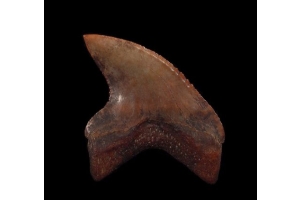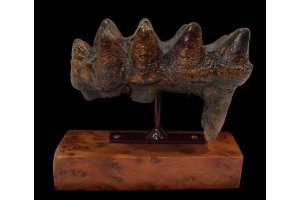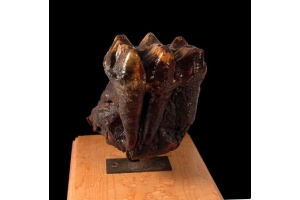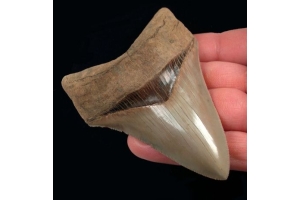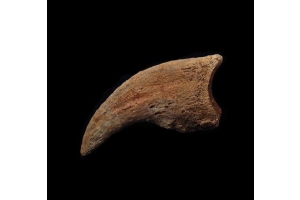Monthly Archives: November 2024
- November 29, 2024
Few artifacts capture attention when it comes to collecting treasures from the ocean’s depths like the elusive black shark tooth. With its distinct dark hue and fossilized appeal, the black shark tooth has intrigued collectors and scientists alike, becoming a highly sought-after item among enthusiasts. From its ancient origins to its journey to the shore, let’s dive into what makes these rare shark teeth a true enigma.
What Exactly is a Black Shark Tooth?
Black shark teeth stand out due to their distinct color and often remarkable condition, unlike the typical tan or gray fossilized shark teeth. The black color results from mineralization over millions of years, where elements such as iron and manganese seep into the tooth and replace its organic material. This process, which happens in specific sediment-rich environments, is why these teeth have a unique appearance. Each black shark tooth offers a glimpse into prehistoric oceans, encapsulating the marine
- November 25, 2024
For fossil collectors and enthusiasts, the allure of owning an authentic Mastodon tooth fossil is a captivating prospect. The size and structure of these ancient teeth not only reflect the grandeur of these prehistoric giants but also provide insight into their lifestyle and diet. If you’re exploring the options for a Mastodon tooth fossil for sale, knowing more about the size range and variations can help you find the perfect addition to your collection.
Mastodons, relatives of modern elephants, roamed North America from the late Miocene to the late Pliocene epochs, approximately 10,000 to 4 million years ago. Their teeth, robust and distinctively ridged, are not only fascinating in their structure but also vary significantly in size based on factors like age and feeding habits. Understanding the unique size and value range of an authentic Mastodon tooth
- November 22, 2024
Mastodons, those majestic giants that once roamed the earth, are some of the most fascinating creatures of the Ice Age. They shared the stage with other colossal animals like mammoths, saber-toothed cats, and giant sloths, capturing the imagination of scientists and enthusiasts alike. One of the most captivating parts of these ancient beings is, undoubtedly, their teeth. Mastodon teeth have become valuable not only for research but also as collectible fossils for those with a passion for prehistory. Here at Buried Treasure Fossils, we understand that fascination, offering rare and high-quality fossil specimens, including remarkable mastodon teeth, to collectors and enthusiasts worldwide.
A Peek Into the Mastodon’s World
Mastodons were part of the elephant family, though they differed significantly from their modern cousins. Unlike mammoths, which sported long, curved tusks and woolly coats, mastodons had straight tusks and were less shaggy. They inhabited
- November 20, 2024
For fossil collectors, owning an authentic Megalodon tooth is the ultimate connection to one of the ocean’s most colossal predators. The size range of megalodon teeth varies significantly, making each find unique and contributing to the excitement of the hunt. While there’s no shortage of options to buy these fossils, the best places where you can find them for sale understand the importance of their size range and origins can enhance your experience, whether you’re searching for the best place to find Megalodon teeth or just want to learn where to find Megalodon teeth with ease and confidence.
Why Megalodon Tooth Size Matters
The Megalodon, an apex predator of the ancient seas, had jaws filled with massive teeth, some reaching more than seven inches in length! These fossilized teeth are found in a range of sizes, typically from about two inches to over seven inches, each size carrying unique appeal for collectors and enthusiasts alike.
- November 19, 2024
Raptor claw fossils offer a fascinating glimpse into our planet's prehistoric past. These relics aren't just fascinating specimens; collectors and paleontology enthusiasts alike prize them for their historical and monetary value. With factors like rarity, condition, and provenance impacting their worth, each raptor claw tells its own unique story. At Buried Treasure Fossils, we provide a selection of meticulously sourced raptor and dinosaur claws that are guaranteed to be authentic, legally collected, and perfect for both seasoned and budding collectors.
The Rarity of Raptor Claws
Not all dinosaur claws are created equal. The scarcity of raptor claw fossils, particularly from well-known species like Anzu wyliei or Struthiomimus, adds a significant premium to these treasures. Fossils from private lands in areas like the Hell Creek Formation of Montana or the Kem Kem region of Morocco are prized for their rarity. At Buried Treasure Fossils, each
- November 18, 2024
For fossil enthusiasts, the allure of owning a genuine piece of the prehistoric world is undeniable, and few artifacts are as captivating as an authentic Velociraptor claw. This rare relic connects to one of history's most fascinating predators. But if you’re wondering whether a real Velociraptor claw for sale justifies its price tag, there are compelling reasons why these treasures are worth the investment.
An authentic Velociraptor claw, especially one with verified provenance, embodies far more than just a collectible item. From its rarity and scientific value to the fascinating details of its preservation, a true Velociraptor
- November 14, 2024
When it comes to the fossilized remnants of ancient sharks, few specimens ignite as much intrigue and fascination as the West Java Megalodon tooth. These stunning fossils, uncovered from the rich limestone deposits of Indonesia, offer us more than just a glimpse into the jaws of prehistoric predators—they hold the key to understanding the evolutionary journey of sharks and the marine environment during the Miocene epoch.
Megalodon: The Apex Predator of the Miocene Seas
Imagine a shark so massive it dwarfed today’s Great Whites. The Megalodon, which roamed the oceans approximately 3 to 20 million years ago, was a formidable apex predator, measuring up to 60 feet in length. Its teeth, often measuring over six inches, are as much a testament to its size as they are to its power.
But what makes the West Java Megalodon teeth stand
- November 12, 2024
Ammonites are more than just ancient fossils; they are breathtaking relics of a time when the oceans were ruled by prehistoric creatures. Their intricate spirals and preserved beauty have captivated fossil collectors for decades. But there's something especially magical about Madagascar ammonites, and if you're lucky enough to own one, you possess a piece of Earth's ancient history wrapped in stunning natural artistry.
What Makes Madagascar Ammonites Special?
When it comes to ammonites, not all are created equal. Madagascar ammonites, with their exceptional preservation and striking features, are a rare find. Some of these fossils date back over 100 million years, showcasing intricate growth suture patterns and vibrant colors. The outer shell, when polished, reveals a mesmerizing flash of red aragonite—a stunning effect that makes these
- November 11, 2024
For fossil collectors and enthusiasts alike, few treasures are as prized as an authentic Megalodon tooth fossil. The Otodus megalodon, the largest shark that ever lived, swam the oceans millions of years ago, leaving a legacy of awe-inspiring fossils. Collecting these ancient teeth isn’t just a fascinating hobby—it’s also a smart investment. For those asking, "Where can I buy a Megalodon tooth?" the answer lies with reputable dealers who specialize in authentic, well-preserved fossils. By investing in a genuine Megalodon tooth fossil, collectors not only own a unique piece of natural history but also make a financially sound decision.
The Value of an Authentic Megalodon Tooth
The Megalodon shark was a true oceanic giant, growing up to 60 feet in length, with teeth that could exceed seven inches. These massive
- November 08, 2024
For fossil collectors and enthusiasts, few discoveries are as exciting as finding a well-preserved Megalodon tooth. With a reputation as one of the largest and most formidable predators to ever roam the oceans, the Otodus megalodon left behind fossilized teeth that fascinate scientists and collectors alike. But when it comes to pricing, how much is a Megalodon tooth really worth? It depends on how big it is. Interestingly, the price of these teeth can also reveal important clues about their authenticity. Understanding the factors behind pricing can help collectors make informed decisions when seeking an authentic 6-inch Megalodon tooth fossil for their collections.
How Much is a Megalodon Tooth Worth?
Megalodon teeth can be a fascinating investment, with prices reflecting their size, quality, and rarity. Typically, the larger and better-preserved a tooth is, the more you can expect to pay. For instance, smaller teeth



